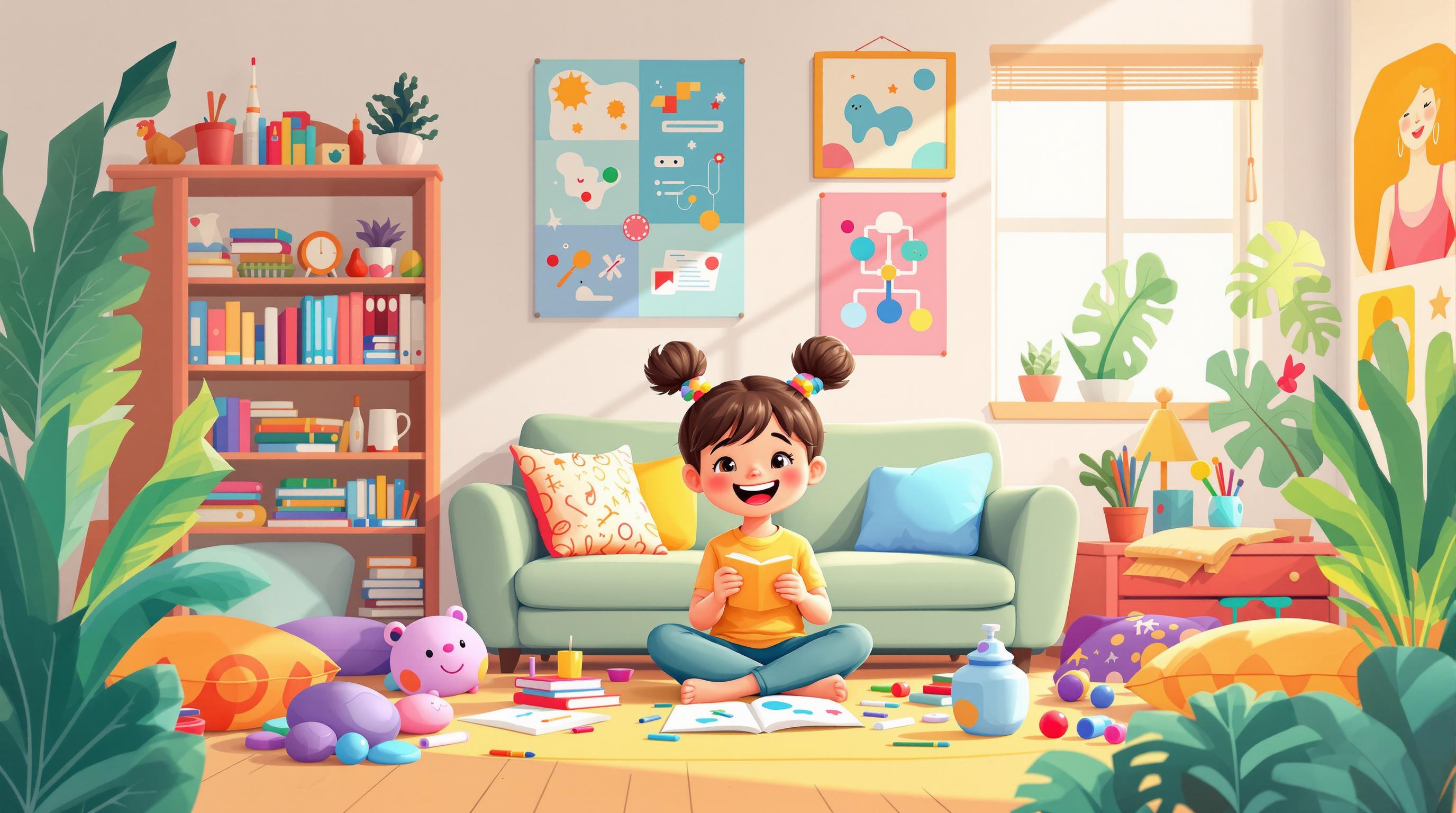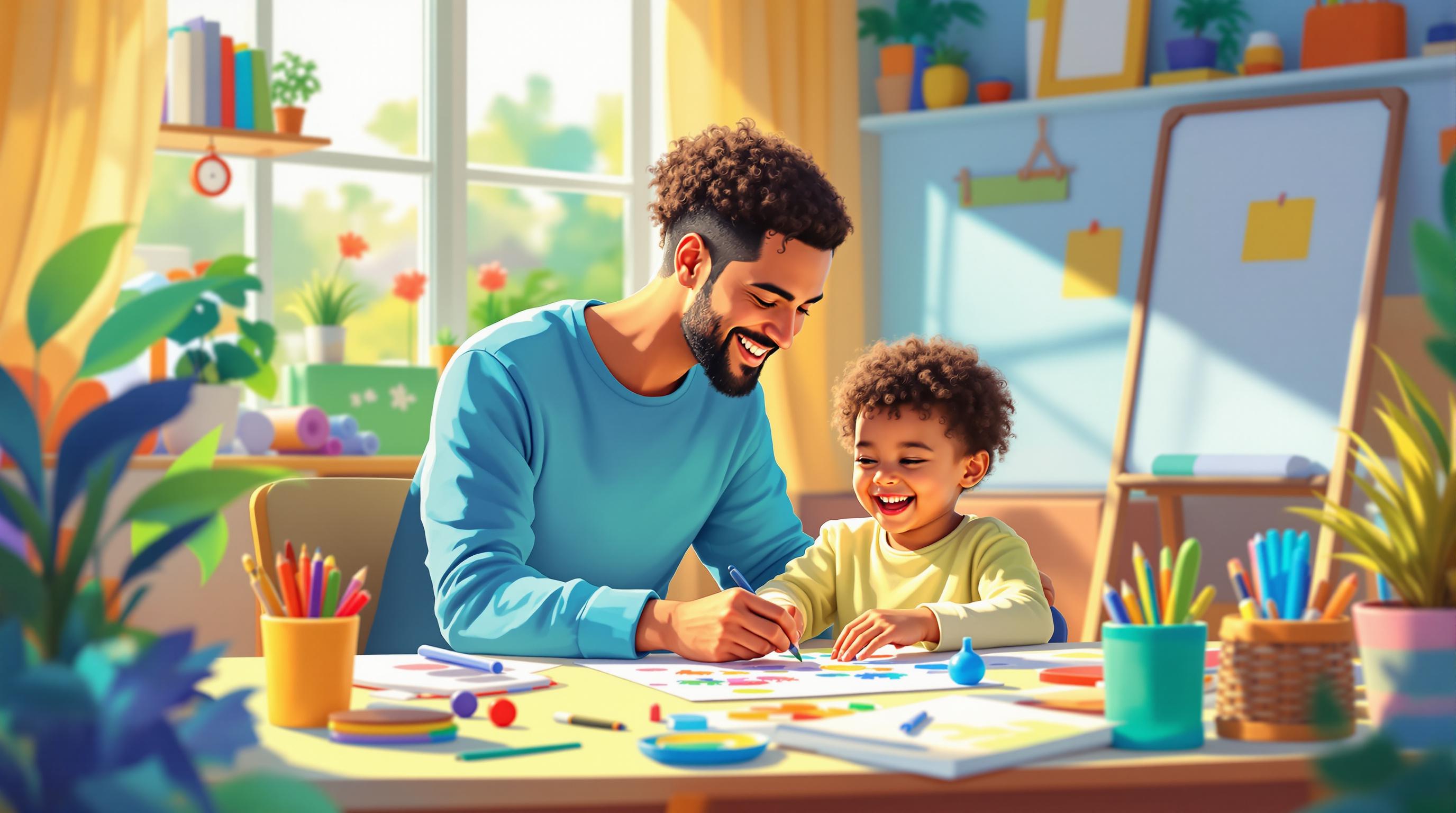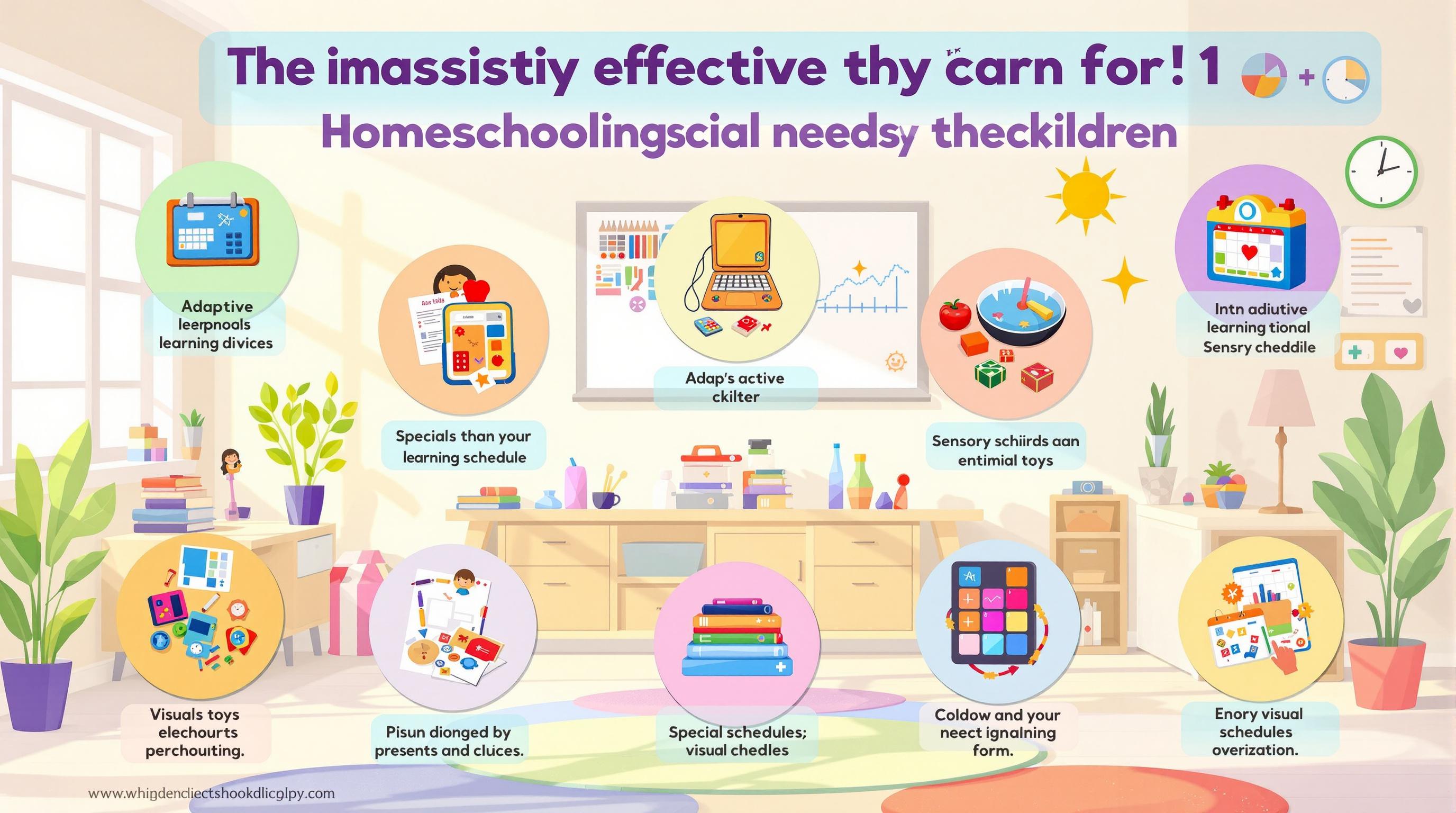Digital citizenship is about using tech and the internet safely, responsibly, and ethically. Here's what kids need to know:
- Online Safety: Use strong passwords, don't share personal info, report uncomfortable situations
- Responsible Behavior: Be respectful, think before posting, spot and report cyberbullying
- Digital Literacy: Check multiple sources, understand digital footprints
- Balanced Use: Follow screen time limits, do offline activities
- Digital Rights: Respect copyright, use privacy settings
Key tips for kids:
- Be kind online
- Keep personal info private
- Think before you post
- Balance screen time with real-world activities
- Tell a trusted adult if something feels wrong
Parents and teachers play a crucial role in guiding kids to become responsible digital citizens. Open communication and setting good examples are key.
| Aspect | Online | Real Life |
|---|---|---|
| Secrets | Password | Treehouse code |
| Personal Info | Things you don't share online | Stuff you only tell best friends |
| Footprint | Digital tracks you leave | Footprints in snow |
| Bullying | Cyberbullying | Being mean at recess |
| Limits | Screen time | Eating too much candy |
Remember: The digital world is always changing, so keep learning and adapting your online habits.
Related video from YouTube
Staying Safe Online
Kids need to know how to stay safe online. Let's look at some key ways to help them use the internet securely.
Making Good Passwords
Strong passwords are your first defense online. Here's how kids can make them:
- Mix uppercase and lowercase letters, numbers, and symbols
- Make them at least 12 characters long
- Don't use personal info like birthdays or pet names
- Use different passwords for each account
Think about using a password manager like LastPass or 1Password. These tools can create and store tough passwords safely.
Keeping Private Info Safe
Kids need to know what info to keep private online. Here's a quick guide:
| Keep Private | Why |
|---|---|
| Full name | Stops identity theft |
| Home address | Keeps you physically safe |
| Phone number | Avoids unwanted calls |
| School name | Keeps you secure |
| Social Security number | Prevents money fraud |
| Passwords | Keeps accounts safe |
Tell kids to ask a trusted adult before sharing any personal info online.
Spotting Online Dangers
Kids need to know about online threats. Here are some common ones:
- Phishing: Fake messages trying to steal your info
- Scams: Offers that seem too good to be true
- Cyberbullying: Mean behavior from others online
- Bad content: Stuff that's not okay for kids to see
Tell kids to trust their gut. If something feels weird, talk to an adult right away.
Safe Web Browsing
To browse safely:
- Use kid-friendly search engines like Kiddle or KidzSearch
- Turn on SafeSearch in Google and YouTube's restricted mode
- Use ad-blockers to avoid bad ads
- Close pop-ups without clicking them
- Use bookmarks for favorite sites instead of typing web addresses
Online Footprints
Kids should know their online actions leave a trail. Here's how to explain it:
"Think of walking on a beach. Each step leaves a footprint. Online, every post, comment, or like is like a footprint in the sand. These can last a long time and lots of people can see them."
To manage their digital footprint, kids should:
- Think before posting: Is it True, Helpful, Inspiring, Necessary, and Kind (THINK)?
- Use privacy settings on social media
- Don't share too much personal info or photos
- Remember that even deleted stuff might still be online somewhere
Being Kind Online
Teaching kids to be kind online is just as crucial as teaching them good manners in real life. Let's dive into how we can help children communicate well and build positive relationships on the internet.
Good Online Behavior
Being respectful online is key to good digital citizenship. Here's how kids can practice good online behavior:
- Use polite language in posts and comments
- Think before posting: Would you say this in person?
- Disagree respectfully if you don't share someone's opinion
- Avoid using ALL CAPS (it's like shouting)
Remember: There's a real person behind every screen name. Treating others with kindness online creates a better digital environment for everyone.
Online Friendships
Building healthy online relationships is a crucial skill for kids. Here's how to guide them:
| Do's | Don'ts |
|---|---|
| Set clear boundaries | Share personal info with strangers |
| Talk to parents about online friends | Meet online friends alone |
| Be yourself in interactions | Pretend to be someone else |
| Take breaks from online socializing | Chat online excessively |
Encourage kids to balance their online and offline friendships. Face-to-face connections are just as important as digital ones.
Stopping Online Bullying
Cyberbullying is a serious issue many kids face. Here's how to help prevent and handle it:
1. Recognize the signs
Changes in mood, avoiding social situations, or hiding screens might indicate cyberbullying.
2. Document evidence
Save screenshots of harmful posts or messages.
3. Block and report
Teach kids how to block bullies and report incidents on social media platforms.
4. Don't respond or retaliate
Bullies often want a reaction, so it's best to ignore their attacks.
5. Talk to a trusted adult
Encourage kids to speak up if they're being bullied or witness bullying.
"The skills they learn in this BE INTERNET AWESOME program gives them power to make good choices." - Author, Blogger
Google's "Be Internet Awesome" program offers great resources to teach kids about digital citizenship and how to be "upstanders" - people who support targets of cyberbullying and help stop incidents.
Smart Sharing
Teaching kids what's okay to share online is crucial. Here's a quick guide:
| Safe to Share | Keep Private |
|---|---|
| Hobbies and interests | Full name |
| Positive accomplishments | Home address |
| General opinions on topics | Phone number |
| Fun, appropriate photos | School name |
| Kind comments and support | Passwords |
Remind kids: Once something's posted online, it can be hard to completely remove. Think twice before sharing anything personal or potentially embarrassing.
Understanding Others Online
Fostering empathy in online conversations helps create a kinder digital world. Here's how to help kids show understanding:
- Consider how their words might make others feel
- Clarify misunderstandings through face-to-face conversations when possible
- Leave positive, supportive comments on friends' posts
- Respectfully disagree without being unkind
Privacy and Security Tips
Let's talk about keeping kids safe online. Here are some practical ways to protect their info and devices.
Social Media Safety
Social media can be fun, but it needs to be set up safely:
| Action | Why It Matters |
|---|---|
| Make profiles private | Limits who sees your kid's content |
| Check friend lists often | Keeps access to known people only |
| Turn off location | Stops strangers knowing where your kid is |
| Use strong, unique passwords | Makes hacking harder |
Don't forget to check these settings regularly. Social media platforms love to change things up.
Protecting Your Information
Kids need to know what to keep private. Here's a quick guide:
- OK to share: Favorite color, hobbies, thoughts on kid-friendly stuff
- Never share: Full name, address, phone number, school name, passwords
Ask your kid: "Would you be cool if everyone at school saw this?" It's a good way to make them think before posting.
Website Tracking
Websites use cookies to follow what you do online. Here's the scoop:
Cookies are small files that remember what you like and what you've been up to online. To handle them:
- Use private browsing when you can
- Clear cookies often
- Be careful about accepting all cookies on websites
Screen Time Limits
Kids need a balance between online and offline time. The American Academy of Pediatrics says:
| Age | How Much Screen Time |
|---|---|
| Under 18 months | None, except video chats |
| 18-24 months | Good stuff, with grown-ups watching |
| 2-5 years | 1 hour a day of quality shows |
| 6 and up | Set limits, don't mess with sleep or other activities |
Christine Elgersma from Common Sense Media says:
"Kids love to be in the know about these things, and it will give them a sense of power."
Get your kids involved in setting their own limits. It helps them get why balance matters.
Device Safety
Keeping devices safe is just as important as protecting the info on them. Here's how:
1. Use parental controls: Most devices have these built-in to limit what kids can access.
2. Keep software updated: This makes sure you have the latest security fixes.
3. Teach safe downloading: Only get apps from official stores like Google Play or Apple's App Store.
4. Use antivirus software: It's an extra shield against nasty stuff online.
5. Set up device passwords: This stops others from getting in if the device is lost or stolen.
The goal isn't to scare kids, but to make them feel in control. Amanda Jo Haney, MSW, puts it well:
"ALSO – NEVER GIVE OUT YOUR ADDRESS ON SOCIAL MEDIA! Don't even tell anyone you don't know what city you live in or what school you go to."
sbb-itb-fb77983
Online Rights and Rules
Kids need to know what's okay and not okay online. Let's break it down.
Using Others' Work
When you use stuff others made, remember:
| Do This | Don't Do This |
|---|---|
| Give credit | Copy without asking |
| Use "free to use" content | Think everything's free |
| Ask when unsure | Use copyrighted stuff |
| Learn about Creative Commons | Ignore copyright notices |
Think of every creative work as having a "no trespassing" sign. That's copyright law in action.
Making Online Content
When you create stuff online:
- Be original
- Respect privacy
- Think before you post
- Keep it clean
Respecting Digital Property
Taking digital stuff without permission? Not cool. Here's why:
- It's not fair to the creator
- It can get you in trouble
- It doesn't help you be creative
Being a Good Online Citizen
Being good online means thinking about others. Remember:
- Treat people with respect
- Report bad behavior
- Keep your personal info private
- Be careful what you post
Heather Bowcutt from KidsEmail.org says:
"Teaching digital responsibility early is key as kids move from playground to Facebook friends."
Sharing Things Properly
Sharing online is fun, but do it right:
- Only share what you're allowed to
- Give credit
- Don't share others' personal info
- Use privacy settings
Emily Post, etiquette expert, reminds us:
"Treating others with care in small ways could change the world."
Learning Tools
Teaching digital citizenship doesn't have to be boring. There are tons of fun resources to help kids learn about staying safe and acting responsibly online. Let's check out some of the best tools:
Online Learning Sites
A few websites offer top-notch digital citizenship lessons:
| Website | What's Cool | Who It's For |
|---|---|---|
| Common Sense Education | Interactive stuff, content you can tweak, resources in English and Spanish | K-12 kids |
| Be Internet Awesome | Free "Interland" game, educational materials | Elementary and middle schoolers |
| PBS Learning Media | Videos, interactive lessons, docs on 10 digital citizenship topics | PreK-12 students |
Common Sense Education's Digital Citizenship Curriculum is a standout. They teamed up with Harvard Graduate School of Education to create research-based lessons on important stuff like balancing screen time, protecting privacy, and dealing with cyberbullying.
Teaching Materials
Teachers and parents can grab ready-to-use lesson plans:
AT&T's Achievery gives you free PDF lesson plans from different sources. They cover everything from digital citizenship basics to advanced topics like AI algorithms.
Google's Be Internet Awesome comes with a curriculum you can download and the "Interland" game. Here's what an ISTE educator had to say:
"Be Internet Awesome teaches kids the fundamentals of digital citizenship and safety so they can explore the online world with confidence."
Family Chat Topics
Get the conversation going at home with these digital citizenship topics:
1. Online vs. Real Life: Talk about how stuff you do online can affect your offline world.
2. Digital Footprint: Explain that things posted online can stick around forever.
3. Think Critically: Discuss how to spot fake news and evaluate online info.
4. Cyberbullying: Cover how to recognize, report, and stop online bullying.
5. Screen Time: Work together to set healthy limits on device use.
Learning Games
Make digital citizenship fun with these games:
| Game | What It Teaches | Age Group |
|---|---|---|
| Interland | Online safety, critical thinking | 8-12 years |
| Digital Passport | Digital citizenship skills | Grades 3-5 |
| Digital Compass | Making smart choices online | Middle school |
Heads up: Digital Passport is going away on June 30, 2025. Enjoy it while you can!
Homeschool Directory

Homeschooling? Homeschool Directory has a bunch of digital citizenship resources:
- Curriculum suggestions
- Online safety worksheets
- Forums to share tips and experiences with other families
Summary
Kids need to learn digital citizenship in our tech-heavy world. Here's what you need to know:
Online Safety and Privacy
Kids should:
- Use strong, unique passwords
- Ask parents before downloading anything
- Tell an adult about uncomfortable online situations
They shouldn't:
- Share personal info online
- Click suspicious links
- Meet online friends in person without permission
Responsible Online Behavior
Before posting, kids should ask: Is it True, Helpful, Inspiring, Necessary, and Kind (THINK)?
They need to:
- Be respectful in digital interactions
- Spot and report cyberbullying
Digital Literacy
It's important for kids to:
- Check info from multiple sources
- Get how the internet works
- Know about digital footprints and their lasting impact
Balanced Tech Use
Kids should:
- Follow screen time limits
- Do offline activities and talk face-to-face
- Take breaks from devices for digital wellness
Protecting Digital Rights
Teach kids to:
- Respect copyright and give credit for others' work
- Share content responsibly
- Use privacy settings
Digital citizenship is always changing. As tech evolves, so should how we teach kids to use the digital world safely.
"Teaching digital responsibility early is key as kids move from playground to Facebook friends." - Heather Bowcutt, KidsEmail.org
Parents and teachers are crucial in guiding kids' digital journey. Open communication and good examples help kids become confident, responsible digital citizens.
Homeschooling families can find great resources on digital citizenship at Homeschool Directory. They offer curriculum ideas and online safety worksheets to help create a solid digital citizenship education plan for your child.
FAQs
How do you explain digital citizenship to a child?
Explaining digital citizenship to a child is about making online behavior easy to understand. Here's a simple way to break it down:
Be nice online: Treat people on the internet like you would in person. No mean comments or bullying.
Keep secrets safe: Don't share personal stuff like your address or phone number online.
Think first, post later: Before you share something, ask yourself: "Is this true? Is it kind?"
Don't forget the real world: Spend time playing outside and talking to people face-to-face, not just on screens.
Speak up if something's wrong: If you see something online that makes you feel weird or scared, tell a grown-up you trust.
To make these ideas stick, try comparing them to things kids already know:
| Online Stuff | Real-Life Stuff |
|---|---|
| Password | Your secret treehouse code |
| Personal info | Things you only tell your best friend |
| Digital footprint | Tracks you leave in the snow |
| Cyberbullying | Being mean at recess |
| Screen time | Eating too much candy |
The goal? Help kids make smart choices when they're online. As Devorah Heitner, who wrote a book about kids and tech, puts it:
"To teach digital citizenship, focus on: 1. Empathy. 2. How the internet works. 3. Understanding user data. 4. Practicing digital literacy. 5. Acknowledging the digital divide. 6. Practicing digital wellness. 7. Securing digital devices."


